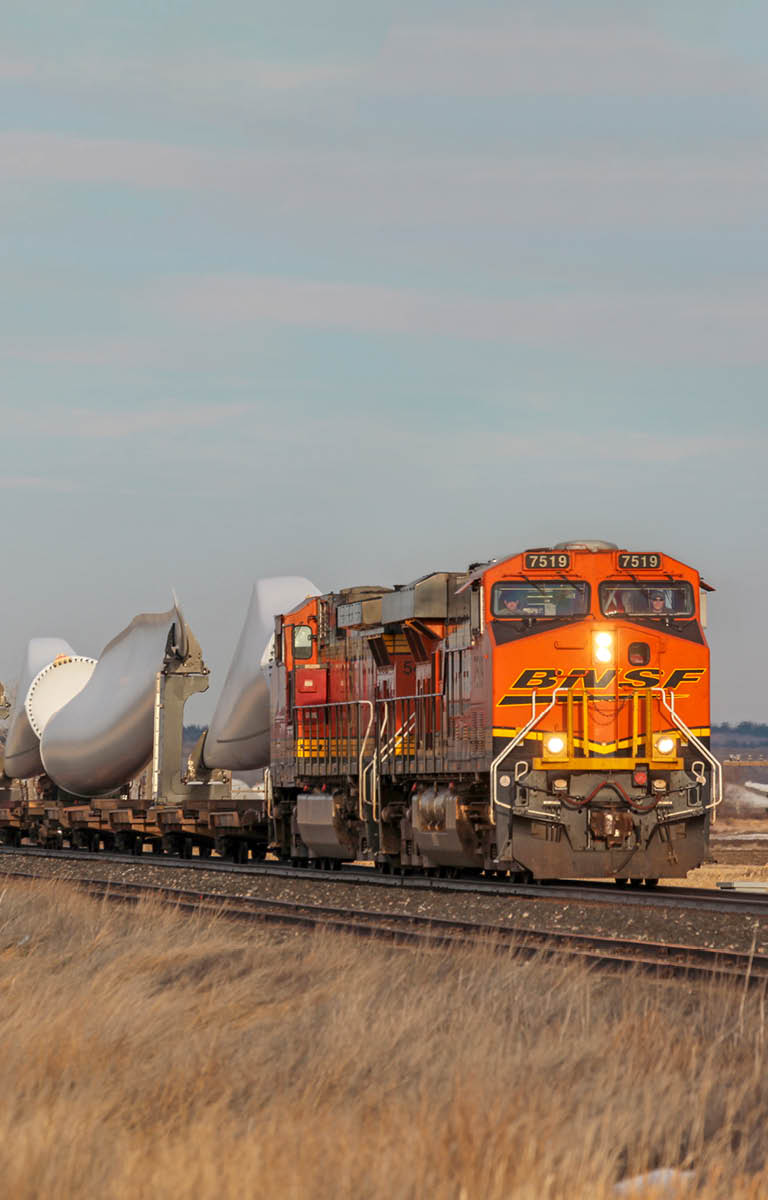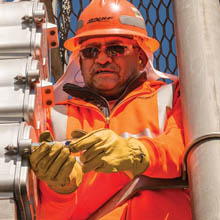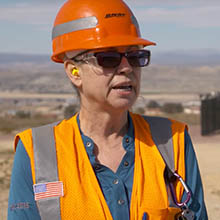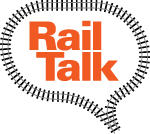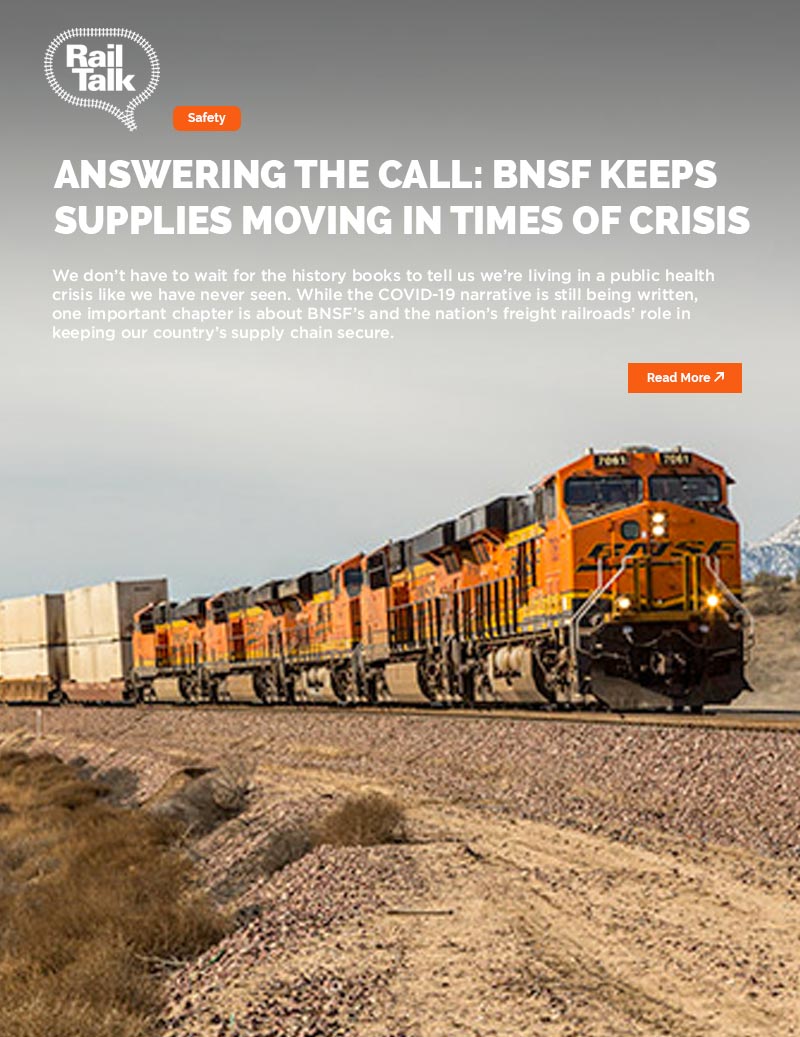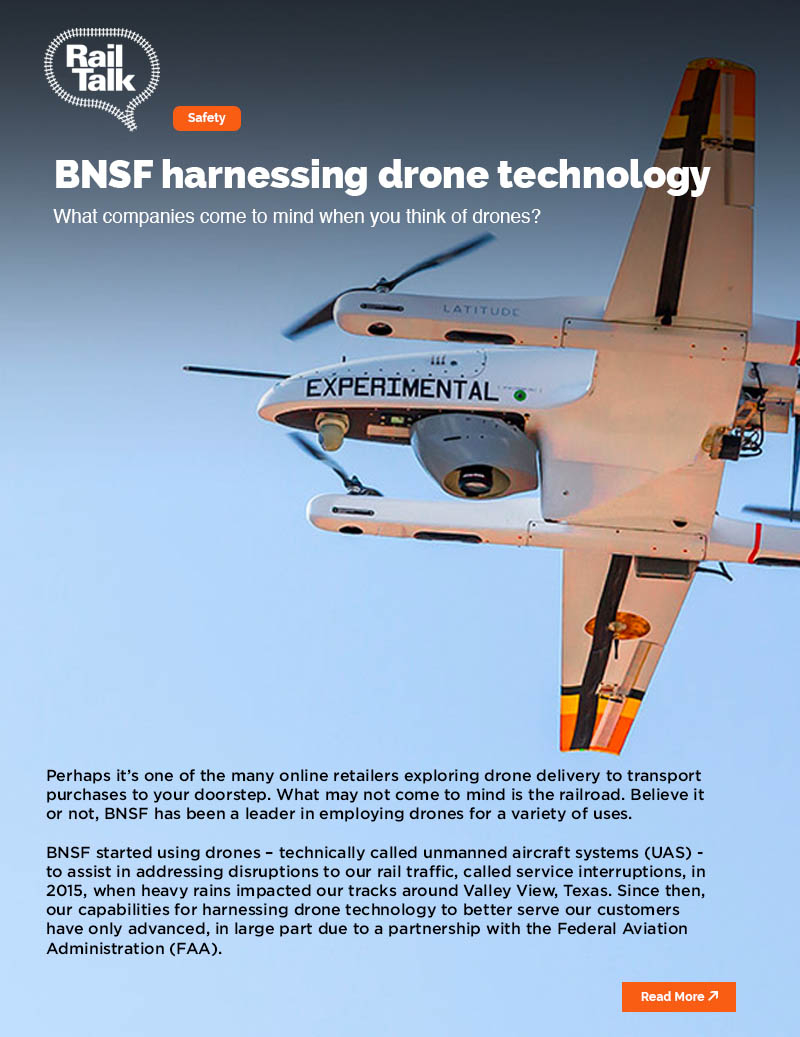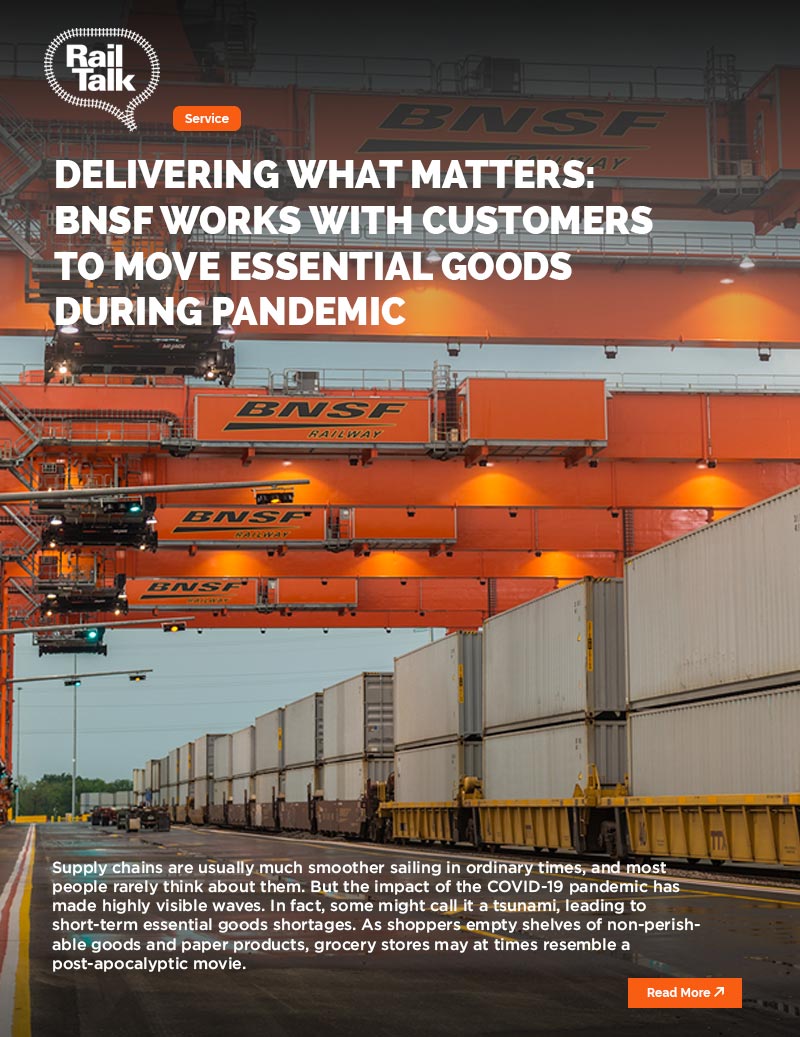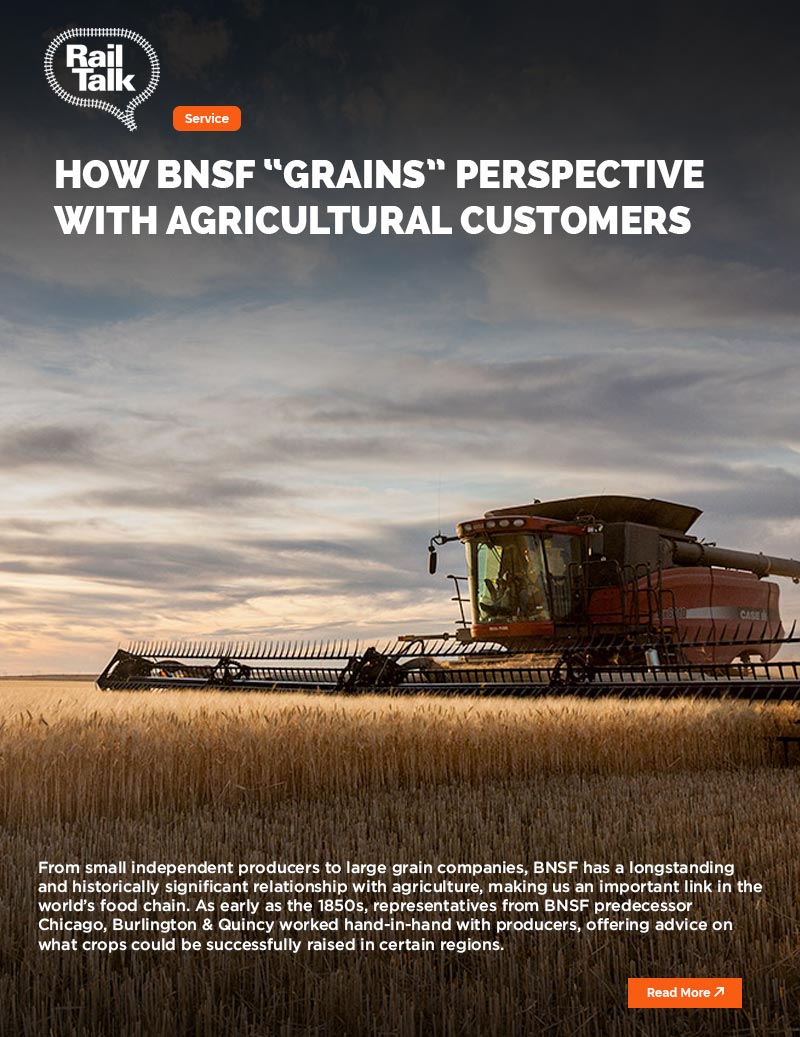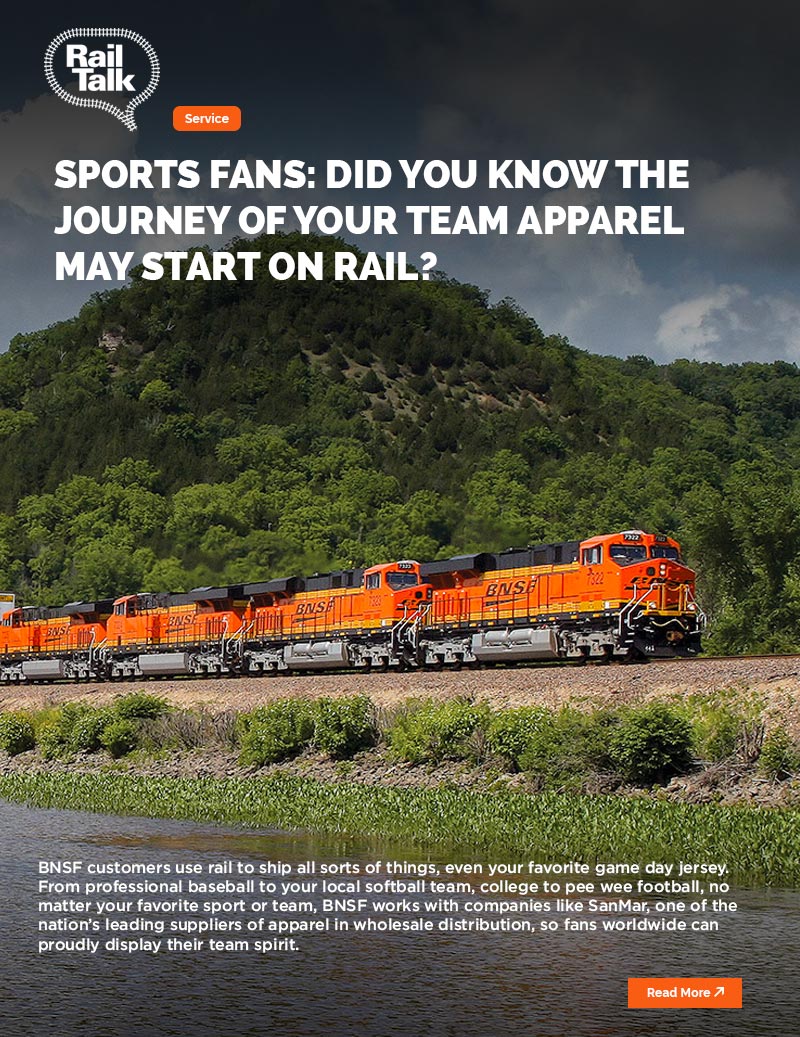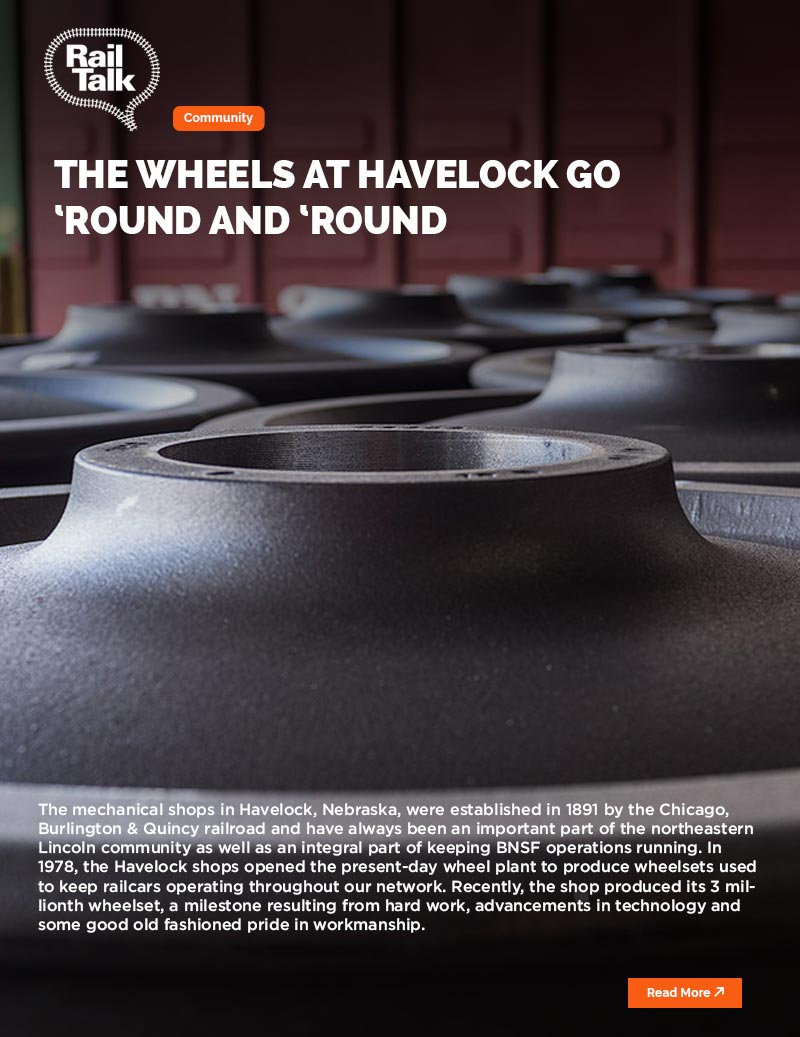Environment
BNSF is committed to working closely with our customers and our communities to respect our environment and become an ever more sustainable enterprise.

We believe it is important to minimize our impact on the planet and contribute to the long-term sustainability of every community we serve, by cutting emissions, saving fuel, relieving highway congestion and more.
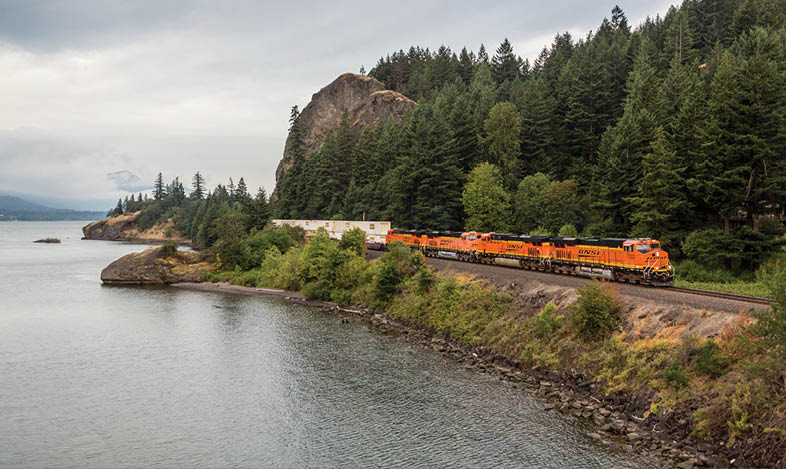
Developing Cleaner Technology
BNSF is actively pursuing multiple means to reduce our carbon emissions and utilize more sustainable technology in our operations.
Cleaner technologies we invest in include:
Battery-Electric Locomotives
Battery-Electric Hostlers, Forklifts & Drayage Trucks
Idle Control
Electric Wide-Span Cranes
Automated Gates at Intermodal Facilities
More Fuel-Efficient Tier 4 Locomotives
Cutting Our Customers' Carbon
The fact is: No other form of land-freight transportation is more fuel- and resource-efficient than rail. When BNSF customers convert shipments from trucks to trains, they significantly decrease their carbon emissions. A single double-stack intermodal train can effectively remove several hundred long-haul freight trucks from the highway.
Shipping with BNSF enabled our customers to reduce their total carbon emissions by 32.8 million metric tons.
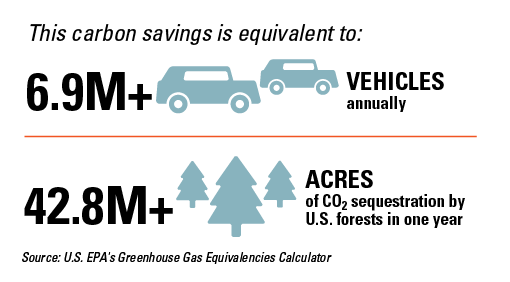
Lowering BNSF Emissions
By upgrading the majority of our locomotive fleet to more energy-efficient technologies, BNSF has been able to increase fuel efficiency and decrease emissions over the last several years. Improved operations and maintenance practices contribute to increased fuel efficiency as well.
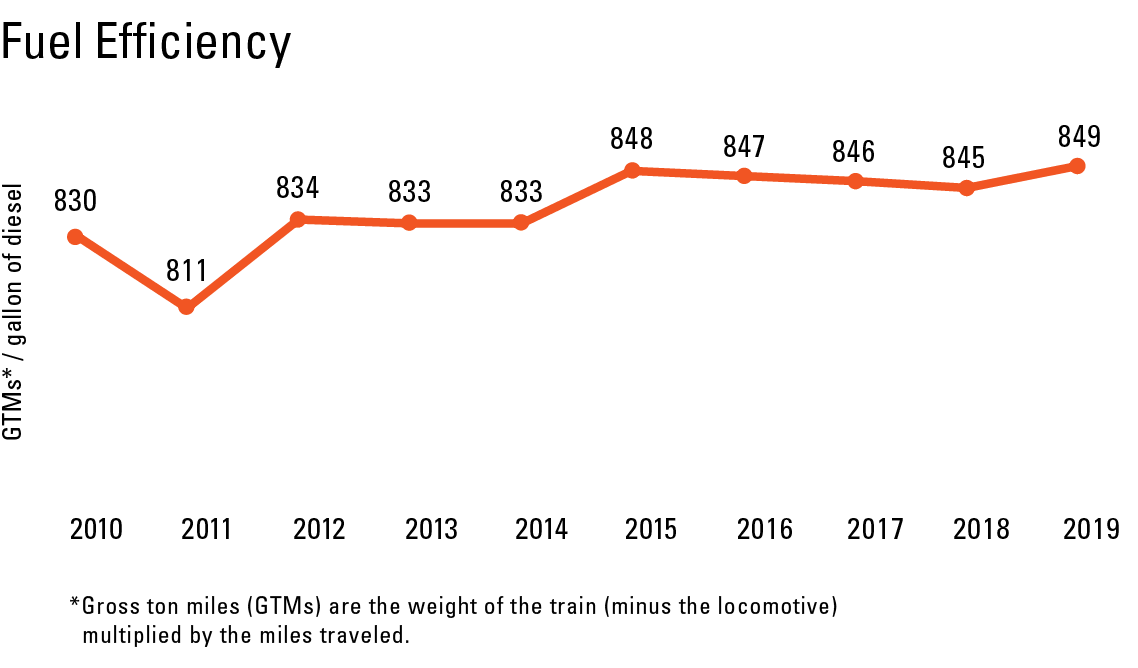
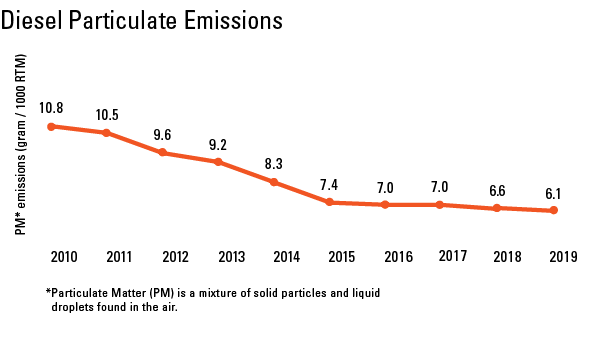
Recycling Commitment
BNSF recycling efforts further reduce our environmental impact. Materials recycled in 2019 include approximately:

Rehabbing Legacy Sites
BNSF continues to address the environmental impacts created by legacy sites – places where our predecessor railroads and others may have conducted operations for up to 100 years. Over the last 10 years, BNSF has rehabilitated approximately 190 sites and invested approximately $400 million toward remediation efforts.
Supporting the Wind Industry
In the course of our everyday operations, BNSF serves many customers also committed to sustainability. We are well positioned to offer wind energy customers a more environmentally-friendly option than trucks to transport wind turbine components, including blades, towers, hubs and nacelles. With the newest and largest rail-controlled fleet of specialty flatcars in the industry, BNSF can handle the oversized and dimensional loads required by these shippers.
BNSF had a record year for moving wind energy components while continuing to safely transport oversized and dimensional freight.
